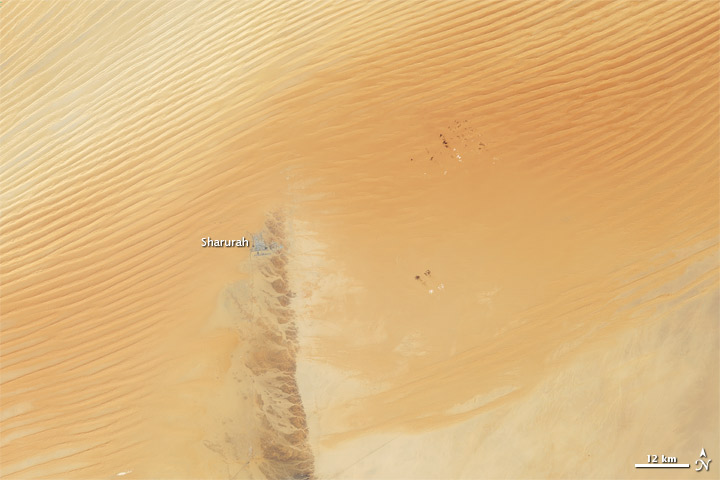Empty Quarter Actually Filled With Sand


The Empty Quarter isn't exactly empty, at least as far as sand is concerned. The area, also called Rub' al Khali, is the size of France but contains as much sand as the entire Sahara Desert -- it is the world's largest sand sea.
This sand sea spreads across parts of Saudi Arabia, Yemen, Oman, and the United Arab Emirates.
Much of the land in this region actually lies at an elevation below sea level, but near the Yemen border, dunes can reach an altitude of 3,900 feet (1,200 meters) above sea level.
The Landsat 7 satellite snapped this natural-color image of the Empty Quarter near its southern margin, just north of the Saudi Arabia-Yemen border, on Feb. 1, 2003.
In the image, linear sand dunes that run northeast-southwest for many kilometers and are sculpted by the winds. In the middle of the image is a slight rise of rocky land, including the border town and airport of Sharurah (Sharorah).
There are several possible explanations for how all that sand accumulated in the Empty Quarter. It's possible that sands in different parts of the Empty Quarter arose from different sources, according to a NASA statement.
Changes in sea level in the Persian Gulf throughout geologic history have periodically exposed sand that could have been carried by winds into the Empty Quarter.
Get the world’s most fascinating discoveries delivered straight to your inbox.
But the reddish sands seen in this image in the southern portion of the sand sea may have traveled through wadis — streams that flow during the rainy season. Carried into the low-lying basin from surrounding higher ground, the sand grains acquired their red hue from iron oxides.
The Empty Quarter is largely empty of humans. The region's intense heat and scarce water make it a very harsh environment to live in.



